Infographics are visually stimulating and force us to summarize well. These brain-friendly student creations can be a great change of ...
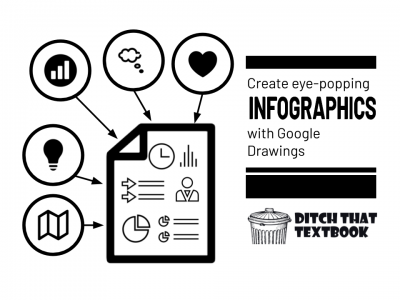
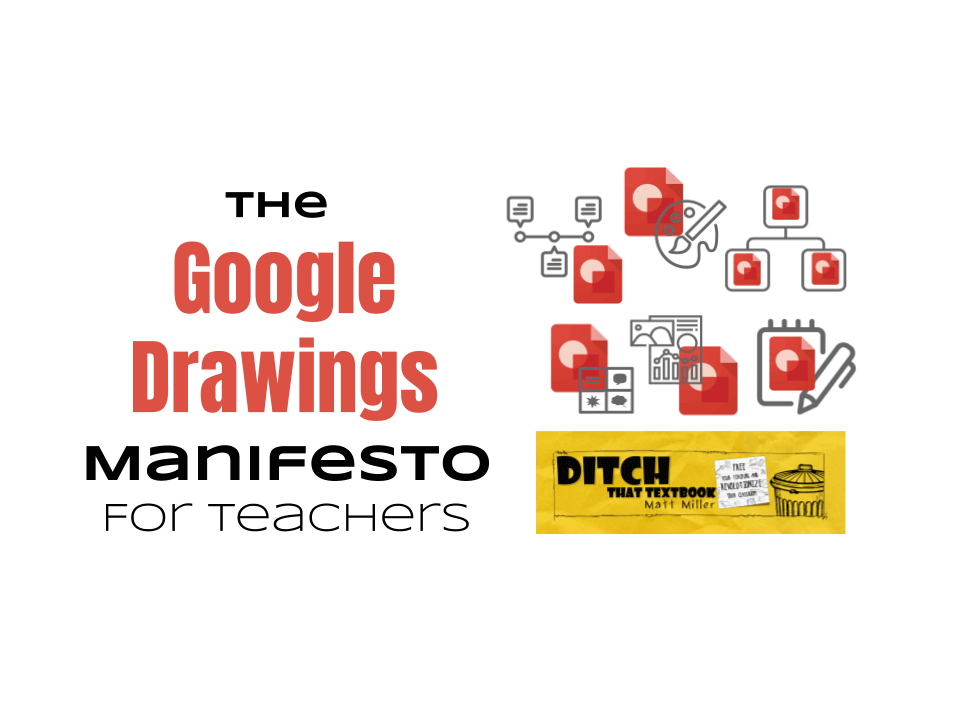
Google Drawings is a blank slate for your students’ creativity. Find lots of tips, tricks and teaching ideas in this post.
Google Drawings is the hidden gem in the core G Suite tools for education.
Everyone is familiar with Google Docs, Google Slides and Google Sheets. They correlate nicely with the Microsoft Office products we used for years and years.
Google Drawings doesn’t fit into a nice, neat box like that.
Here it is in a nutshell:
Google Drawings is like a digital posterboard. (Or a big digital sheet of paper.) It has a few things you can add: text, images, shapes and lines. That’s it, which makes the Google Drawings learning curve pretty low for students.
When you’re done with Drawings, you can go to File > Download as … to save the file as an image file (JPEG or PNG) or a PDF file.
This powerful tool has lots of potential!
Below we'll show you:
Some of the sneaky features you might not know about
How students can create with it
How students can collaborate and think with it
Plus scroll down for TONS of Google Drawings resources!
Plenty! Just by clicking and playing around with the main elements mentioned above gives you a pretty basic idea of what it can do. It’s pretty intuitive; you and your students will get a grasp of it pretty quickly.
There are a handful of features that take Google Drawings to the next level:
Equal size: When you create text, images or shapes, it's easy to make sure they're the same size. While resizing, these blue bracket lines show you which items are the same size horizontally or vertically.
Equal spacing: Distributing everything equally makes your creations look nice and neat. The blue bracket lines also show you when spacing between items is equal.
Centering and lining up: That's what the red lines are for. As you move something around on the page, they'll show you what it's centered with or what it's lined up with on the edge.
Other sneaky features on Google Drawings:
There's so much potential here. Because Google Drawings is like a blank slate, the possibilities for classroom implementation are limitless!

Give the old poster project a new twist. Create them in Google Drawings instead. The benefits:
The biggest benefit: You can add clickable links to these posters. Link to video, audio, images and interactive websites to make your poster an interactive, multimedia one.
Click here to see a post full of ideas about Google Drawings interactive posters.
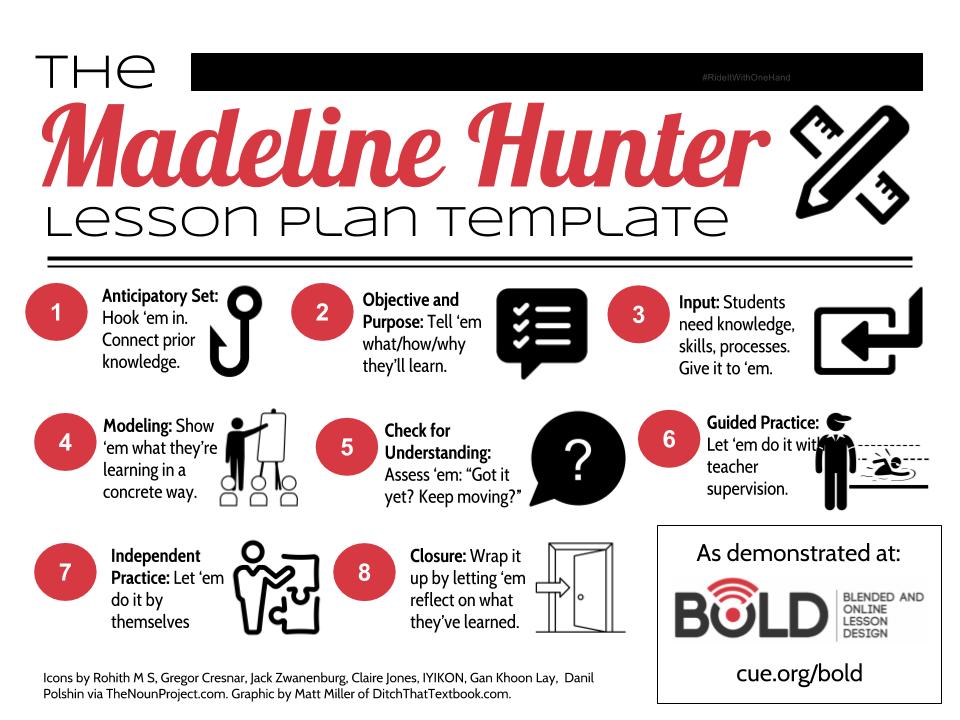
Have you seen those tall infographics on Pinterest or other social media? They seem to be everywhere!
They're really easy to create with Google Drawings, and they can put a fun twist on gathering information and presenting it in your class.
Instead of doing a traditional essay or research report, consider creating an infographic instead!
Some hints for kicking them up to the next level:
Check out this video for the how-to’s and how it fits into the classroom.
Click here to see a post full of ideas on creating infographics with Google Drawings.
Timelines give students a great visual understanding of how events happened over time. There's a reason they've been a staple in the classroom for a while.
But timelines can be a drag. They can lead to very one-dimensional, shallow thinking.
Unless we kick the learning up a notch!
Google Drawings can be a great medium for creating timelines. We can even increase the depth of knowledge and level of thinking in these activities.
Start with a big, long horizontal line. That's your timeline. Use lines and text to connect new ideas, and even add images, icons and other illustrations.
Click here for more ideas for creating great timeline activities that promote deeper thinking.

Blackout poetry takes standard text (from a newspaper or magazine article … really any text you find). The artist then uses a marker and blacks out all of the words except for a select few, leaving a pithy piece of prose behind.
I was first introduced to blackout poetry by Austin Kleon, author of the books “Steal Like an Artist” and “Show Your Work”.
You can do blackout poetry with Google Drawings, too! It’s a fun way to look at text a little closer, to identify important words, and to remix something into your own creation.
Check out this video for the how-to’s and how it fits into the classroom.
Click here for more ideas for using Google Drawings to create blackout poetry in the classroom.
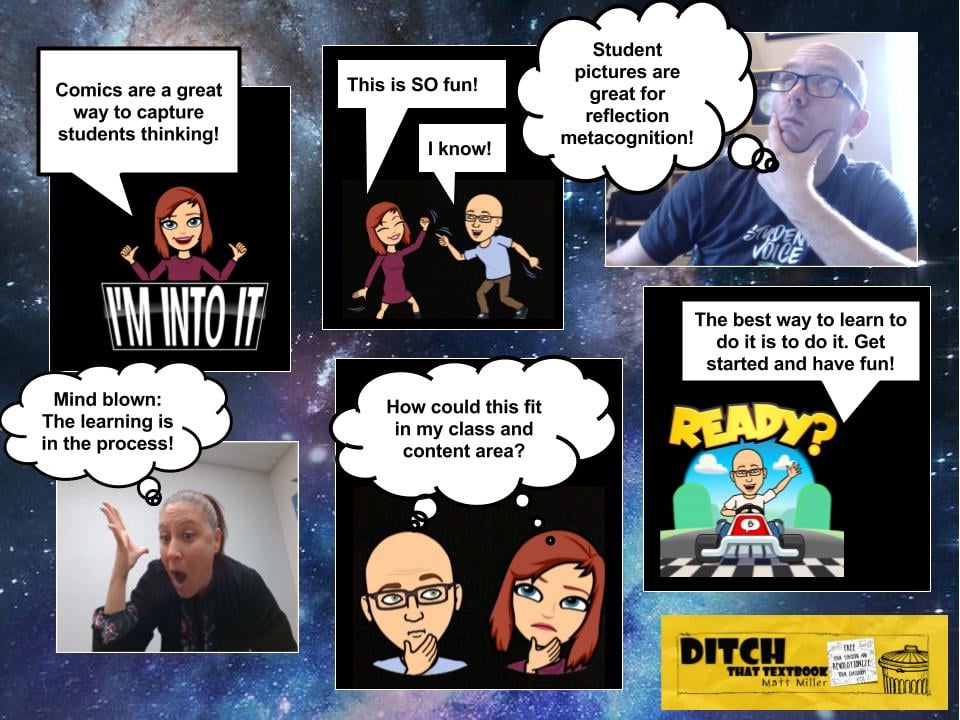
There is power in students having to go through the creative process. They need to synthesize their thinking in order to produce. Higher level thinking occurs when students create a non-linguistic representation of their ideas.
Plus, it lets students tap into their inner creativity — which is a fun and even effective practice in the classroom. Letting students pursue their creativity not only increases students’ engagement in class but also empowers them to take ownership of their learning.
Google Drawings is a great medium for giving students this creative outlet. It lets them create a framework with shapes, add speech/thought bubbles, and insert images in one place!
Check out this video to see the making of a Google Drawing comic strip.
Click here for more ideas for adding Google Drawings comic strips to your class.
Giving students a space to make meaning, to make something out of pieces they’re given, to describe their thinking visually by reorganizing — THAT’S better learning than a simple digital worksheet.
Moveable activity boards. Virtual manipulatives. Digital interactive activities.
Whatever they’re called, Google Slides and Google Drawings were made for creating them. Create a background image, add the image to a slides presentation, create moveable icons with text and assign to students!
Check out this video for the how-to’s and see how it fits into the classroom.
The great thing about Google Drawings -- and most Google products -- is the ability to share. Use the blue "Share" button in the top right corner to give other people access to your drawings. Then they can jump in and view it, comment on it and/or edit it (depending on the sharing settings you create).

Our classes are often filled with words, but our brains do their thinking in pictures. They just have to convert words over to images before their work can begin.
Our brains also tend to remember more when we connect different types of input -- and a powerful combination is verbal and visual input. That means combining words and images. It's sticky learning at its best!
Google Drawings are made for visual notetaking:
Students can collaborate on their visual notes as well. (Two brains are better than one!) Just have students share a Google Drawing with their classmates and they can both work in the same digital space.
Click here to see a post full of ideas on creating infographics with Google Drawings.

Understanding different viewpoints is also a great way to delve deeply into a topic. When students can take the place of the person in the image, it helps them see what’s happening in a whole new light.
This activity requires more critical thinking than the first. By taking the character’s perspective, students make an inference (deduce or conclude from evidence and reasoning rather than from explicit statements). Inferring is on the second level of Webb’s Depth of Knowledge (skill/concept). We’re adding more critical thinking here!
Click here for more ideas for fun, deep-thinking Google Drawings activities.
Many times, students need a little guidance in walking through a deep thought process. They're capable of doing deep thinking if we provide some concrete steps.
That's what makes graphic organizers great.
Google Drawings is a natural spot for creating and using graphic organizers. Use shapes, text boxes and lines to draw out your own graphic organizers.
When you're done, share them with your students! There are a couple ways:
Don't want to make your own graphic organizers? I have you covered. I've created more than 15 graphic organizers in Google Drawings that you can copy and use. That way, you don't have to reinvent the wheel!
Click here to see all of those Google Drawings graphic organizers and how to make your own.

Infographics are visually stimulating and force us to summarize well. These brain-friendly student creations can be a great change of ...

Making Mosaic Art with Google Drawings is a fun way to get kids creating in the classroom. Here are the ...

Using Google Drawings to create graphic organizers can help students gather their thoughts and customize to their needs.Sometimes, we just ...
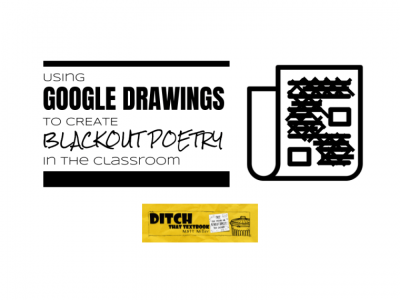
Blackout poetry takes standard text (from a newspaper or magazine article ... really any text you find). The artist then ...
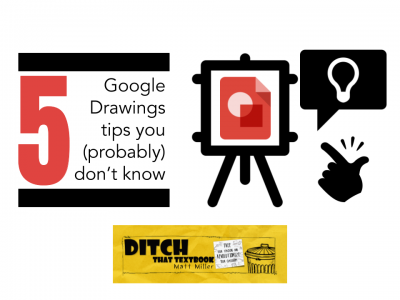
Posters. Advertisements. Graphic organizers. Comic strips. Image annotations. Flyers. Google Drawings is like your digital poster board -- or a ...
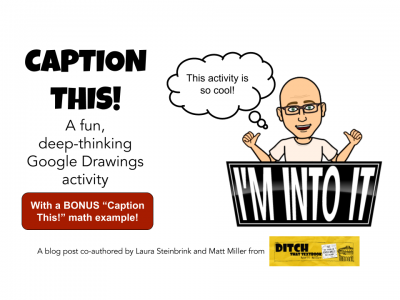
This post is co-authored by Ditch That Textbook's Matt Miller and Laura Steinbrink. Laura is a high school English teacher ...
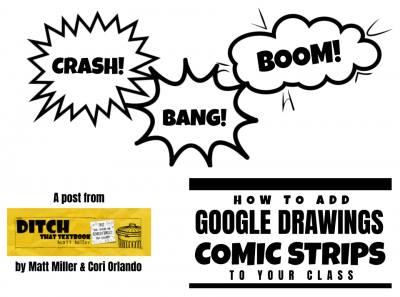
Comic strips captivated us as children. Tap into that energy in the classroom with Google Drawings comic strips! Here’s how. ...
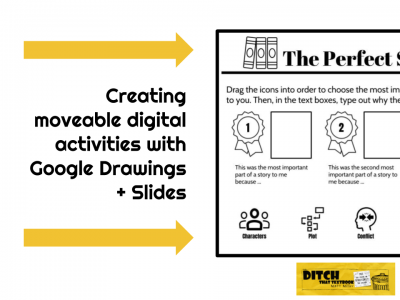
Interactive, moveable activities in G Suite can be easy to create — and can promote deep thinking. A teacher sent ...

Forget the glue sticks, markers and magazines to cut for pictures. Create interactive posters with Google Drawings with links and ...
Looking for even MORE Google Drawings goodies? Check out our collection of videos and podcasts all about ... you guessed it ... Google Drawings!
Blackout poetry takes standard text (from a newspaper or magazine article ... really any text you find). The artist then uses a marker and blacks out all of the words except for a select few, leaving a pithy piece of prose behind. You can do blackout poetry with Google Drawings, too! Check out this video for the how-to's and how it fits into the classroom.
Want to infuse a lesson in the classroom with student-created animation?
Google Drawings is such an easy way to put your ideas into motion on the screen. In this video, you'll learn how to create your own animation INCLUDING the fun extra features you can add to it, how to present it AND how it can be used in the classroom.
Watch the creation of a Google Drawings infographic in 90 seconds (with TheNounProject.com icons).
Watch a Google Drawings comic strip come to life in 90 seconds!

Session expired
Please log in again. The login page will open in a new tab. After logging in you can close it and return to this page.
[…] The Google Drawings Manifesto for teachers: Google Drawings is a blank slate for your students’ creativity. Find lots of tips, tricks and teaching ideas in this post. […]
[…] The Google Drawings Manifesto for Teachers. Google Drawings is a blank slate for your students’ creativity. Find lots of tips, tricks and teaching ideas in this post. Google Drawings is the hidden gem in the core G Suite tools for education. Everyone is familiar with Google Docs, Google Slides and Google Sheets. […]
Hey brother. I just found your site and love it! It’s a Google geeks best friend. I’m finally moving through my certification and am applying g suite to my work as a choir director. Ok…enough of that for now. My question for now has to do with slides vs drawings for infographics. Is there a big difference in functionality between the two? And if not, why wouldn’t you just use slides particularly if you are building one of those tall infographics? Then when you are done, you’re ready to present.
Hey Eric! Always fun to meet a fellow Google geek! Slides and Drawings are so similar. Only major differences I’ve found: 1. Slides has multiple canvases (slides), while drawings works with one canvas. You can share either and download either as an image file. 2. You can insert videos into slides and you can’t in Drawings. (Officially you can’t. There’s a copy/paste hack that lets you do it, though.) Using Slides with a single slide is almost the same as Drawings. If you only want to use one slide/image, I recommend Drawings because it simplifies the user interface for students. Hope that helps.
Love your idea about using images and icons from The Noun Project! I always forget about it. I’m surprised you didn’t mention using AutoDraw to insert images as well. 🙂 It’s such a fun new feature!
What is AutoDraw?
Ah! Autodraw! Find it here: https://www.autodraw.com/ Uses AI and machine learning to turn your doodles into images/shapes/clipart. Pretty cool.
[…] to Laura Sexton, I tried Google Drawings this week. Check out the Google Drawings Manifesto by […]
I had to chuckle when you mentioned it as the “black sheep” of Google Apps … I routinely call Google Drawings the “red headed stepchild” of Google b/c the icon is red!
Another great analogy for my students is that if they know Google Slides, they know Drawings. I say Drawings is just one single slide.
I had my students use google drawings with their iPads and it didn’t work very well! Have you noticed there is better luck with a laptop?
Google Drawings is the one Google App that does not work well with iPads. It is much better suited for Chromebooks/laptops. Hopefully Google will do some work on the back end to make it more user-friendly on the iPads.